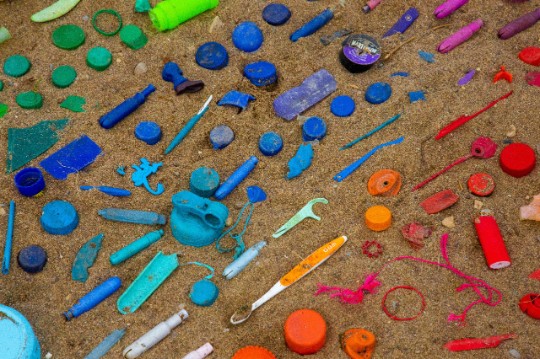From Plastic Fantastic to a Waste Quagmire

Charting the history of plastic packaging could lead to new insights on how to manage the waste it creates.
From food packaging, to contact lenses and credit cards, plastic is used in almost every aspect of daily life. How did it become such a ubiquitous material in just a few decades?
In her 2015 book Plastic Water, about the rise of bottled water, Professor Gay Hawkins, at Western Sydney University’s Institute for Culture and Society, investigated the history of plastic packaging and how it has transformed food production, markets and waste streams. Her insights highlight how to develop better strategies for managing plastic waste and reduce our reliance on plastic packaging.
“Like the Iron Age and Bronze Age, the 20th century can be thought of as the Plastics Age,” says Hawkins. “It’s the material that has defined our culture.”
While much research on plastics focusses on documenting and managing its environmental impacts, Hawkins is exploring how plastic became a normal part of everyday life and the factors that shaped our reliance on it.
“Plastic has had an unbelievably profound impact on how we live — and our environment,” says Hawkins. “I wanted to understand how it became so popular and the impacts of this new material culture.”
To trace the emergence of plastic over the past century, Hawkins delved into the history of the material and how it was promoted to the public. Before 1950, food was predominantly packaged in glass, cardboard, paper or metal. But the development of light and flexible thermoplastics — plastics that can be moulded using heat — heralded a new era of packaging. Fresh fruit and vegetables were covered in cling wrap on polystyrene trays, coffee was served in Styrofoam cups and polyethylene bottles replaced cartons of milk.
Need to know
- Gay Hawkins is investigating the history of plastic packaging.
- The rise in plastic packaging transformed attitudes towards food and freshness.
- Moving to a circular economy will help fight plastic waste.
With the advent of plastic packaging came various tactics to convince the public of its virtues and life-changing uses. In post-World War II Australia, Hawkins says that the transition to plastic was driven by promotional material from the fast-growing plastics industry.
Ads and articles in newspapers and women’s magazines touted plastic as a new ‘miracle’ material. Cling wrap promised to keep food fresh, and frozen goods sealed in plastic packaging were promoted as convenient and economical.
Plastic industry newsletters also began landing on the desks of executives of food production and packaging companies. They promoted plastic as a superior industrial material that would open new pathways for packaging and circulating goods.
“It completely changed our perceptions of food, freshness and cleanliness,” says Hawkins. “People thought food was better and safer in plastic, it also changed how we managed waste by promoting single use, disposability and the throwaway culture.”
But times have changed. “Most organisations in the world now realise that there is a huge global plastics waste crisis. Many have said it’s equivalent to climate change in terms of its environmental impact,” says Hawkins. And while plastic remains pervasive in daily life, efforts to reduce its detrimental impacts have gained momentum in recent years. For example, many supermarkets have banned single-use plastic bags and are using reusable pallets in their logistical supply chains. Newer initiatives have also been adopted, such as a return to bulk-food-supply stores which use consumer-supplied containers, and container ‘lease’ systems for home delivered groceries, similar to the way milk was commonly delivered decades ago.
“We’re going back to shopping like our grandparents once shopped,” says Hawkins. “Plastic helped to fuel linear economies, which are based on a logic of make-take-waste. But now we’re seeing a return to economies that are more circular, that have a return-or-reuse element to them and which aim to extend the life of packaging or avoid it altogether.”
Hawkins and her collaborators are now investigating the complex social and logistical innovations that businesses need to undergo to combat plastic waste in a circular economy. “Technical innovations like bio plastics are not the best solution to the plastics waste crisis,” she says. “Using less plastic and using it differently is the only solution.”
This case study is republished from Future-Makers. Read the original article (opens in a new window).
Partner with ICS
If you would like to collaborate with us or find out more about what we can offer you, please get in touch with our Senior Business Development Officer - Sally Byrnes - using the details below.
Email: S.Byrnes@westernsydney.edu.au
Phone: +61 421 320 441




